
who’s looking at who? install view, 2006
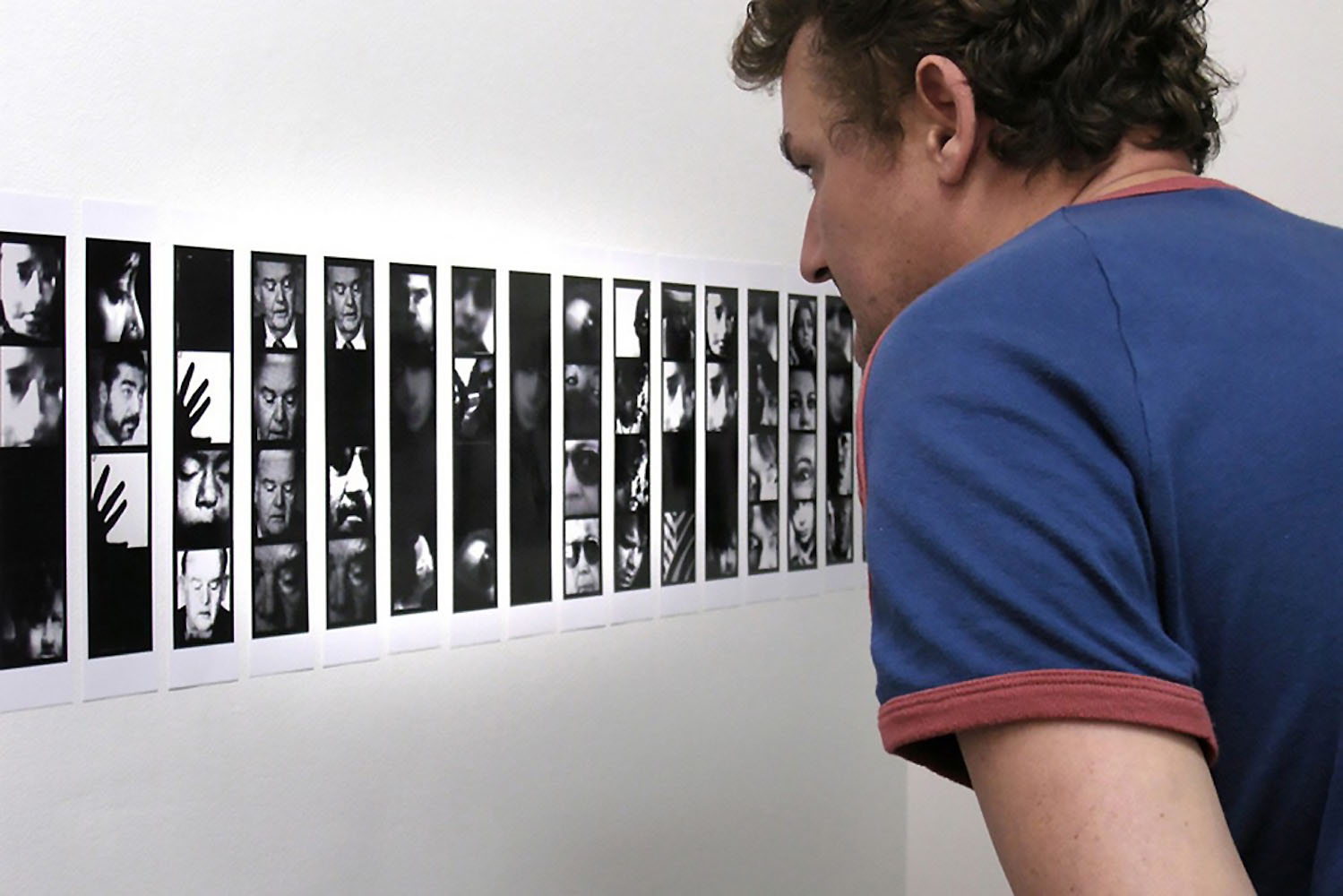
who’s looking at who? photobooth strip film print stock, 2006
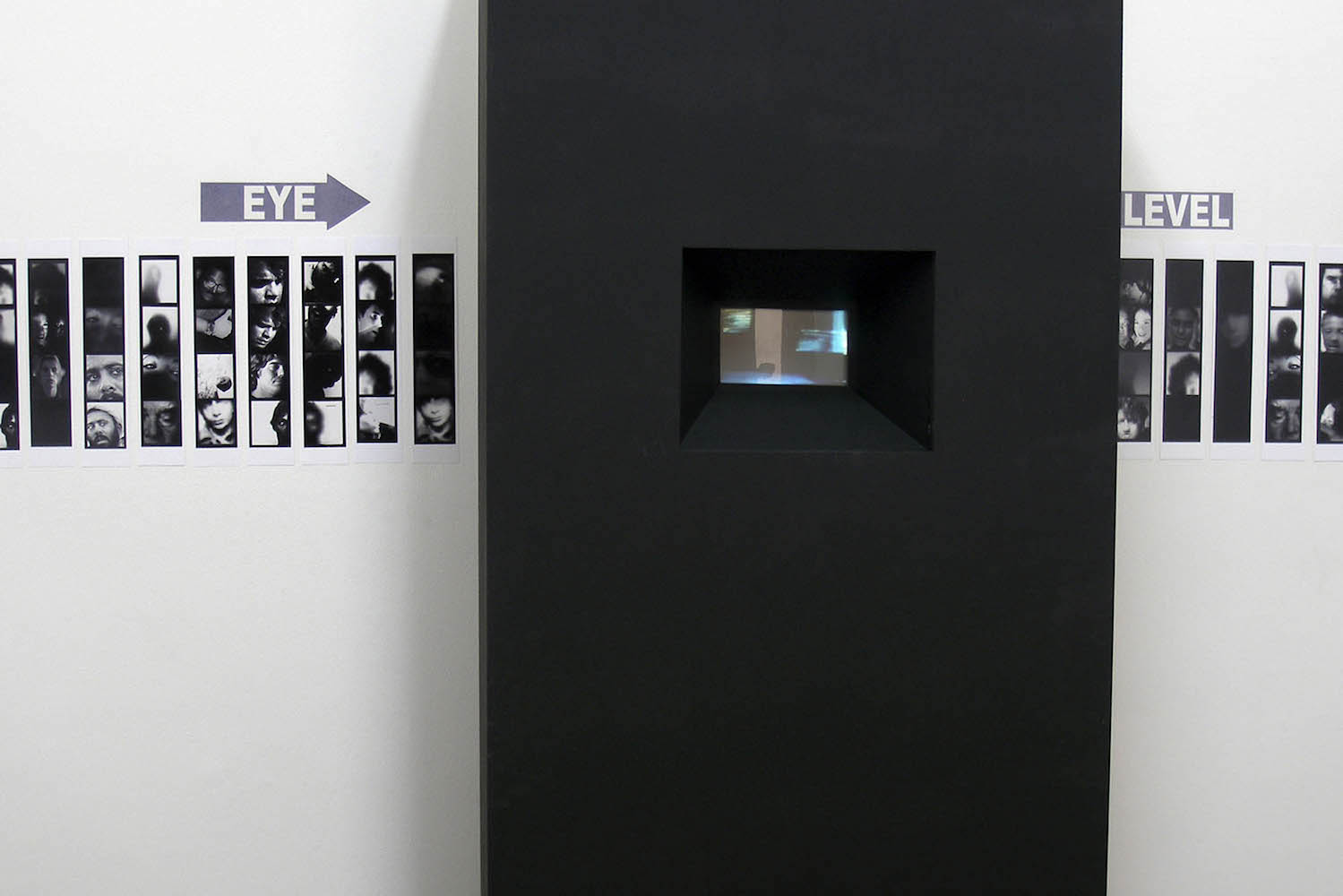
who’s looking at who? closeup view, 2006
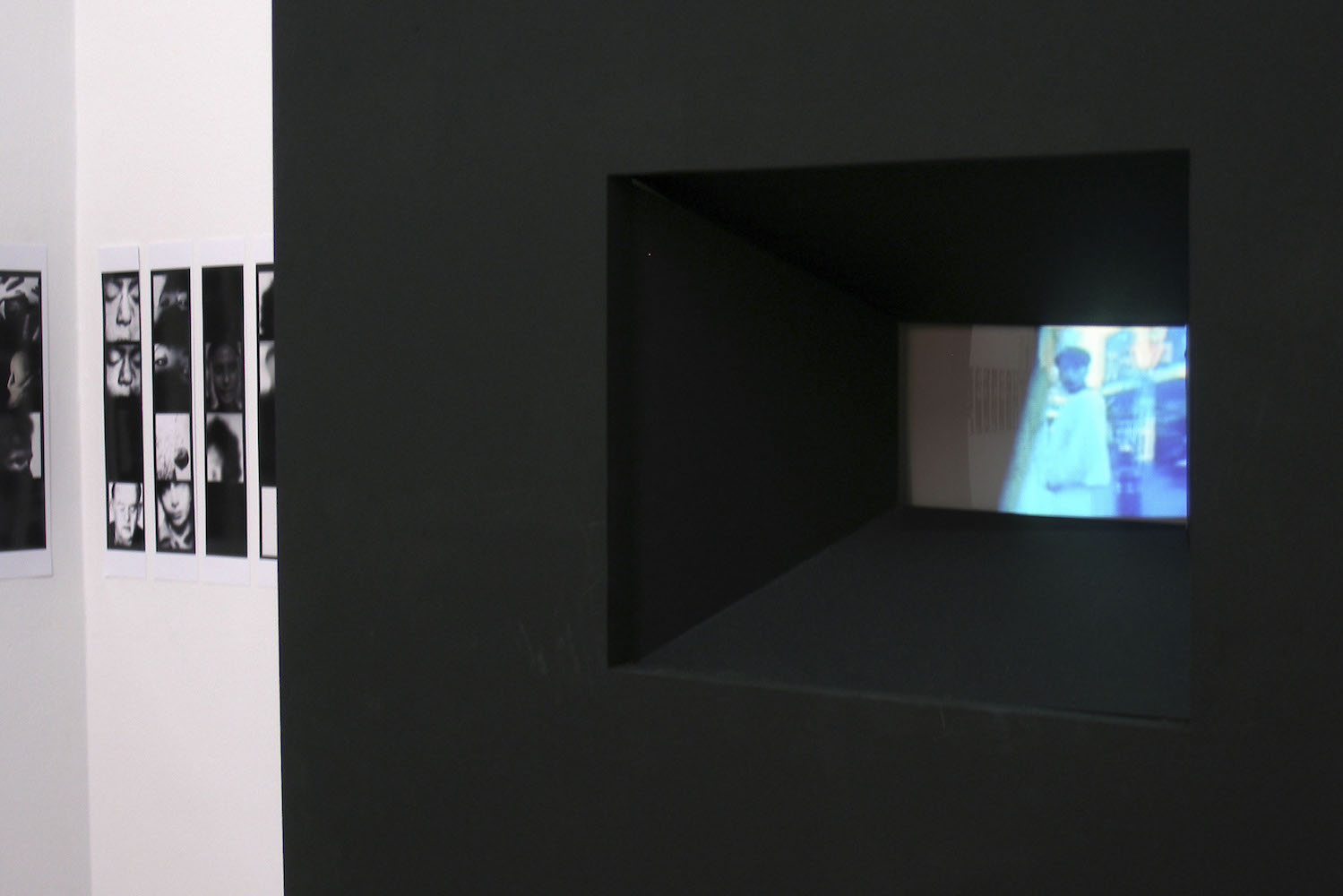
who’s looking at who? detail with video, 2006
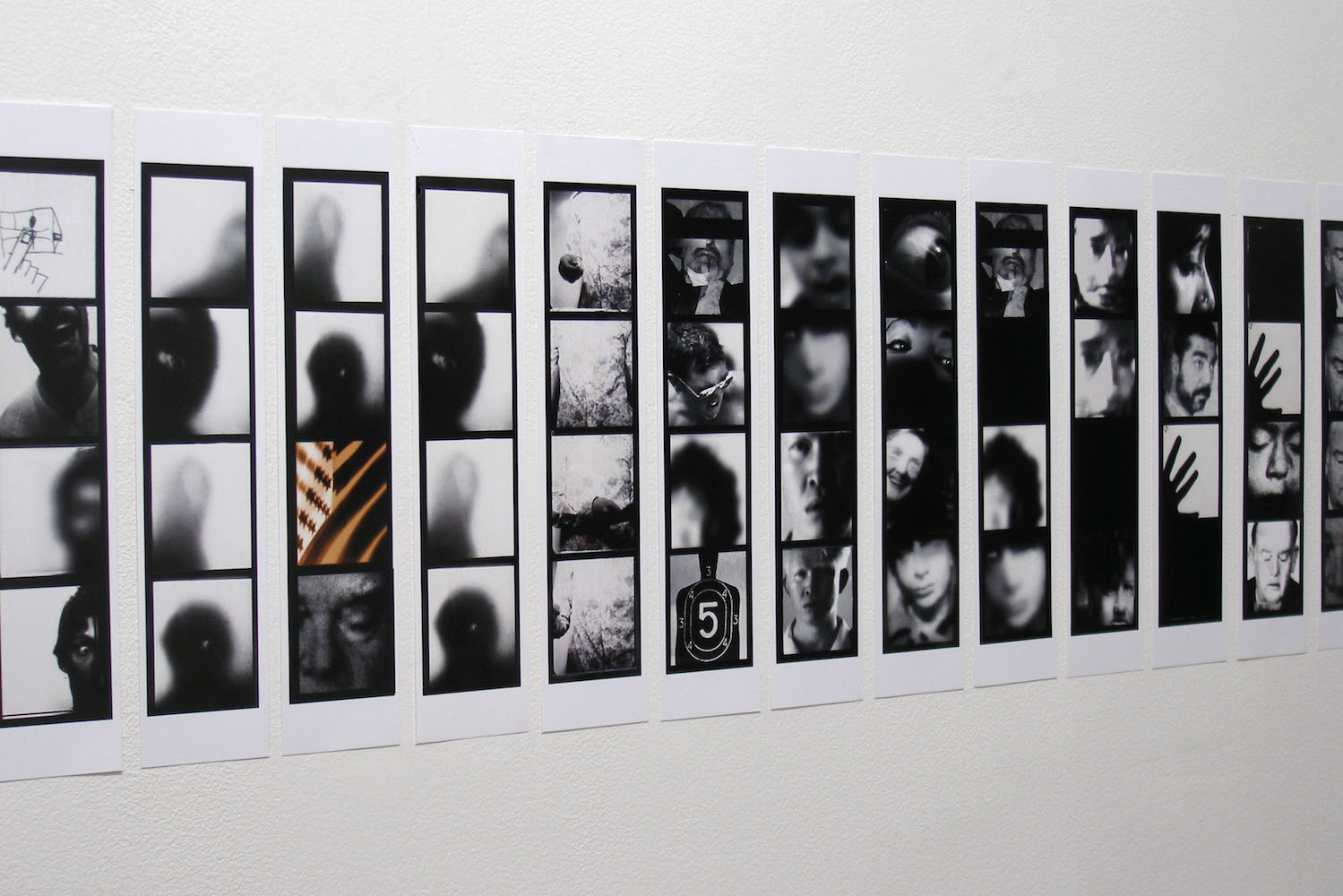
who’s looking at who? photobooth strip film print stock, 2006
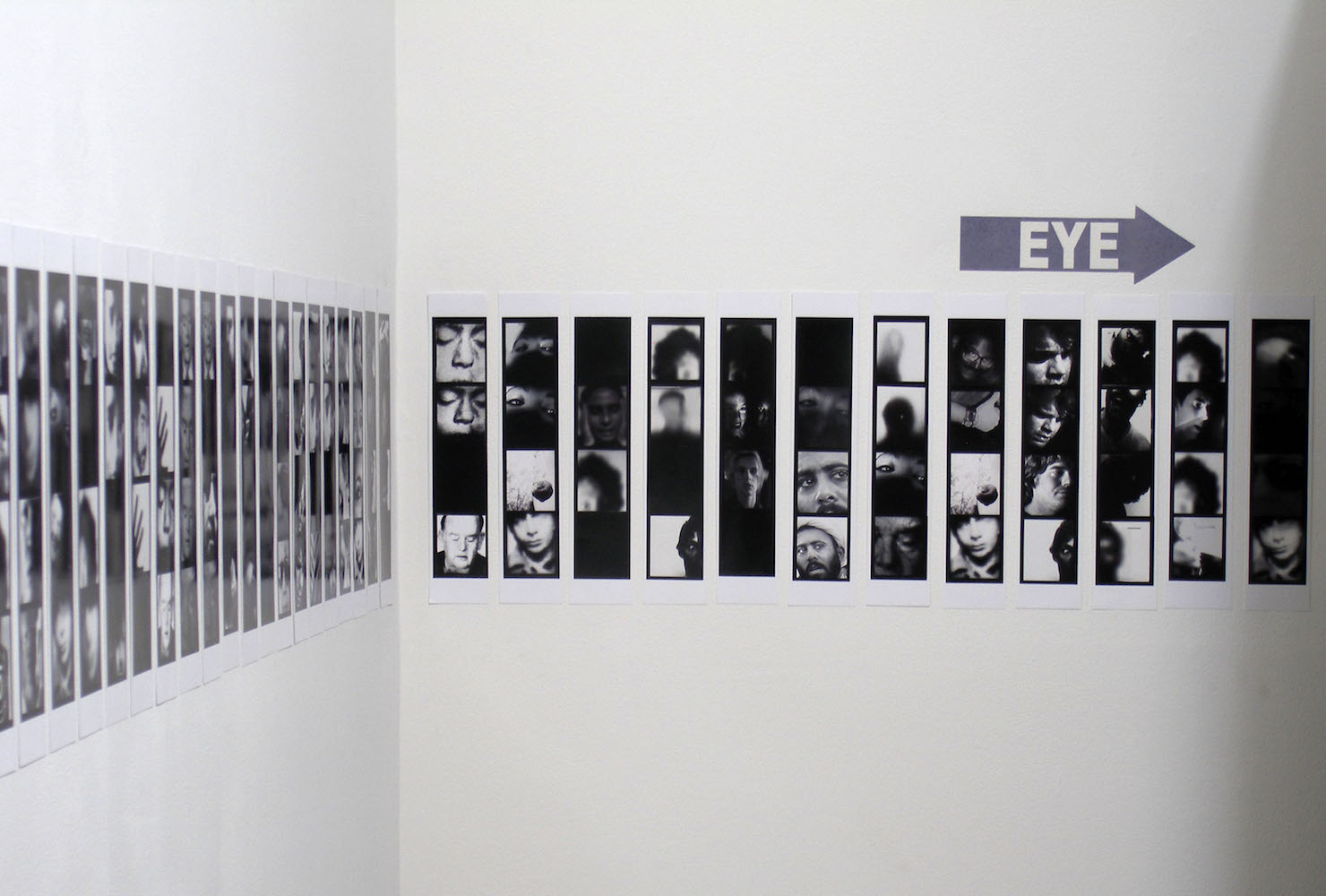
who’s looking at who? photobooth strip film print stock & signage, 2006
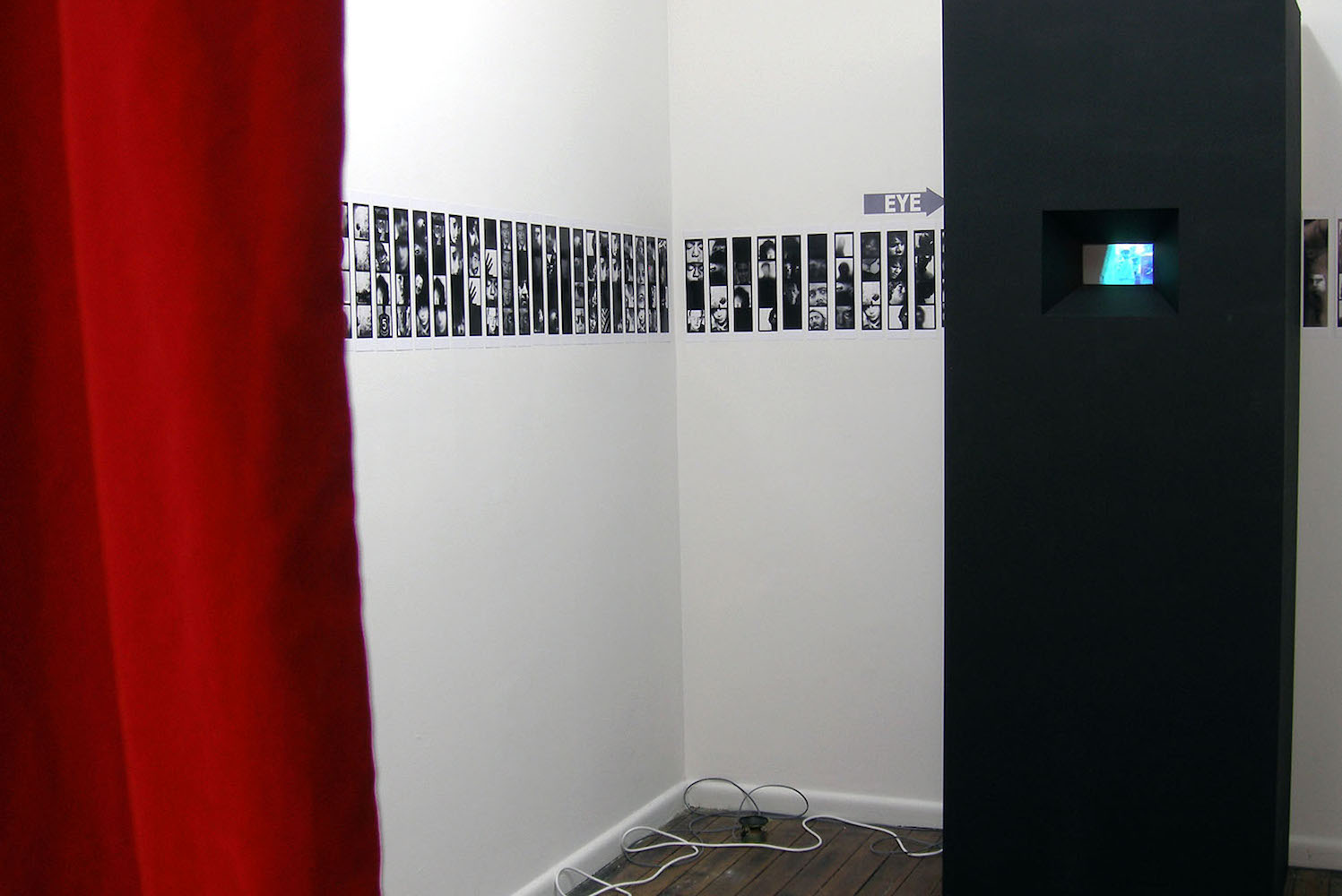
who’s looking at who? install view through ‘booth’ curtain, 2006
2006 | who’s (looking at) who?, MOP PROJECT, Sydney
Installation. Digital prints, timber construction with TV monitor, external speakers
Video loop: HD, 4:3, colour, stereo, 2:20 min
A series of photobooth inspired photo strips using a mix of iconic public faces interspersed with recent friends portraits as grid round a ‘photo booth space’. Images tend to look inwards (to the right and to the left), evoking the presence of the watched other perhaps doing the watching in a paranoid world. The Television screen points to surveillance monitoring within the public domain – while the booth is perhaps a site for voyeurism to proliferate. Its, as the title suggests, a case of who’s (looking at) who? in a world of “otherness”.
_______________
A review from The Art Life states:
At MOP Projects until April 2 Gianni Wise has his work Who’s (looking at) who? sitting next to … Adam Cullen and Cash Brown. Wise’s work is an elaborate installation that riffs on the form of the photo booth. You enter the gallery space through a heavy curtain and facing you is a big black TARDIS-like box with a tiny screen recessed into the surface. The screenplays video footage of people on the street. The footage is crapped out a greenish video and there are ominous sounds coming from a speaker behind the scenes. Around the walls are … photo booth prints, except they are taken from TV – Margaret Thatcher, David Lynch and a bald guy who might be Martin Heidegger or Pik Botha. There is a quote from John McDonald on the gallery handout – “Politics is an embarrassment in much contemporary art – an exercise in selling prepackaged opinions to the converted”. Aside from the pot-calling-kettle-black absurdity of that statement, the key here is the ‘prepackaged’ concept. … The form may derive from a photo-booth, but the audience has no control here, we can only to act as receptors. Is that the point? (note: I believe the reviewer has missed the point, possibly because of his obsession with non-political art — which is in itself a political act.)